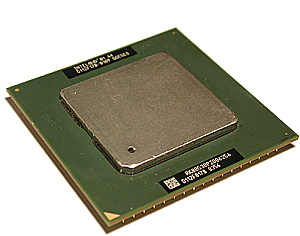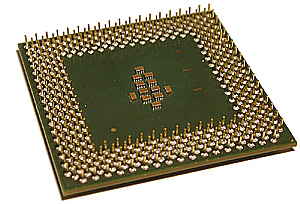
 |

|
| ActiveWin: Reviews | Active Network | New Reviews | Old Reviews | Interviews |Mailing List | Forums |
|
|
|
|
|
DirectX |
|
ActiveMac |
|
Downloads |
|
Forums |
|
Interviews |
|
News |
|
MS Games & Hardware |
|
Reviews |
|
Support Center |
|
Windows 2000 |
|
Windows Me |
|
Windows Server 2003 |
|
Windows Vista |
|
Windows XP |
|
|
|
|
|
|
|
News Centers |
|
Windows/Microsoft |
|
DVD |
|
Apple/Mac |
|
Xbox |
|
News Search |
|
|
|
|
|
|
|
ActiveXBox |
|
Xbox News |
|
Box Shots |
|
Inside The Xbox |
|
Released Titles |
|
Announced Titles |
|
Screenshots/Videos |
|
History Of The Xbox |
|
Links |
|
Forum |
|
FAQ |
|
|
|
|
|
|
|
Windows XP |
|
Introduction |
|
System Requirements |
|
Home Features |
|
Pro Features |
|
Upgrade Checklists |
|
History |
|
FAQ |
|
Links |
|
TopTechTips |
|
|
|
|
|
|
|
FAQ's |
|
Windows Vista |
|
Windows 98/98 SE |
|
Windows 2000 |
|
Windows Me |
|
Windows Server 2002 |
|
Windows "Whistler" XP |
|
Windows CE |
|
Internet Explorer 6 |
|
Internet Explorer 5 |
|
Xbox |
|
Xbox 360 |
|
DirectX |
|
DVD's |
|
|
|
|
|
|
|
TopTechTips |
|
Registry Tips |
|
Windows 95/98 |
|
Windows 2000 |
|
Internet Explorer 5 |
|
Program Tips |
|
Easter Eggs |
|
Hardware |
|
DVD |
|
|
|
|
|
|
|
ActiveDVD |
|
DVD News |
|
DVD Forum |
|
Glossary |
|
Tips |
|
Articles |
|
Reviews |
|
News Archive |
|
Links |
|
Drivers |
|
|
|
|
|
|
|
Latest Reviews |
|
Xbox/Games |
|
Fallout 3 |
|
|
|
Applications |
|
Windows Server 2008 R2 |
|
Windows 7 |
|
|
|
Hardware |
|
iPod Touch 32GB |
|
|
|
|
|
|
|
Latest Interviews |
|
Steve Ballmer |
|
Jim Allchin |
|
|
|
|
|
|
|
Site News/Info |
|
About This Site |
|
Affiliates |
|
Contact Us |
|
Default Home Page |
|
Link To Us |
|
Links |
|
News Archive |
|
Site Search |
|
Awards |
|
|
|
|
|
|
|
Credits |

|
Product: Intel Pentium III 1.13GHz &
D815EEA2 rev. B Review |
Intel Pentium III 1.13GHz
|
Table Of Contents |
 Finally
itís here! The latest representative of the Intel Pentium III family has
landed and is officially available even if Intel doesnít communicate a lot
around it, since the Santa Clara Company is under heavy duty promoting its
top-notch Pentium 4 range of CPUs. This 1.13GHz processor, is manufactured
using the Intel 0,13Ķ fabrication process ensuring it doesnít heat a lot.
The Tualatin (or Copermine-T) 1.13GHz processor uses the socket 370 format
like its predecessors, but its design slightly differs from its siblings.
Indeed the CPUís core is now protected by a metallic shield to prevent any
damages. Obviously
this new Pentium III 1,13GHz erases all the drawbacks of the first bogus
model introduced one year ago before it was immediately recalled for
stability and heat problems.
Finally
itís here! The latest representative of the Intel Pentium III family has
landed and is officially available even if Intel doesnít communicate a lot
around it, since the Santa Clara Company is under heavy duty promoting its
top-notch Pentium 4 range of CPUs. This 1.13GHz processor, is manufactured
using the Intel 0,13Ķ fabrication process ensuring it doesnít heat a lot.
The Tualatin (or Copermine-T) 1.13GHz processor uses the socket 370 format
like its predecessors, but its design slightly differs from its siblings.
Indeed the CPUís core is now protected by a metallic shield to prevent any
damages. Obviously
this new Pentium III 1,13GHz erases all the drawbacks of the first bogus
model introduced one year ago before it was immediately recalled for
stability and heat problems.

Intel Pentium III 1,13GHz
(click to enlarge)
Requiring an alimentation of 1.5V, the Tualatin can works only with i815 Ex Stepping B chipsets. Like every good Pentium III, the Tualatin processor comes with a full speed 256Kb L2-cache memory. This "on die" cache memory features a true 256bits link with the CPU running at the speed of the CPU: 1.13Ghz in that case. The full speed cache memory is wonderful as it delivers better performance than if there were 512kb of conventional cache memory (remember that the cache memory stores the most used data to accelerate the transfer times & so the processing speed in order to reduce waiting times): this cache memory uses a new more efficient algorithm named "8 way set associative". Coppermine Pentium III have seen their data transfer's bandwidth between the CPU and the cache switched from 2.4Gbps (for first Pentium III) to 9.6Gbps! Finally its front side bus is a 133Mhz one and allows to achieve a data transfer bandwidth of 1Gbps between the CPU and the bus instead of 800Mo per second for first Pentium III. As you can understand even if new Pentium III includes less cache memory than before (256 instead of 512k) this memory is more powerful and gives better performance than with 512Kb of standard cache (running at *only* 200Mhz).

Intel Pentium III 1,13GHz
back (click to enlarge)
The Tualatin obviously comes with Dynamic Execution Technology to enhance further performance with three distinct features. The Multiple Branch Prediction predicts program execution through several branches; accelerating the flow of work to the processor while the dataflow Analysis creates an optimized, reordered schedule of instructions by analyzing data dependencies between instructions. Finally the speculative execution unit carries out instructions speculatively and based on this optimized schedule, ensures that the processorís superscalar execution units remain busy, boosting overall performance.
The Pentium III 1,13GHz fully supports MMX extensions: Intel MMX technology includes instructions and data types that allow applications to achieve a new level of performance. Intelís MMX technology is designed as a set of basic, general-purpose integer instructions that are easily applied to the needs of a wide diversity of multimedia and communications applications. The highlights of the technology are: Single Instruction, Multiple Data (SIMD) technique, 57 new instructions, Eight 64-bit wide MMX technology registers, and four new data types. Like every Pentium III worth of that name, the Tualatin comes with a set of SSE instructions completing the MMX ones in order to boost some operations with games or applications that use the Direct X APIs from Microsoft. SSE instructions are especially dedicated to enhanced overall 3D performance. The Internet Streaming SIMD Extensions consist of 70 new instructions (with 52 Floating point ones) and includes single instruction, multiple data for floating-point, additional SIMD-integer and Cacheability control instructions. In comparison to casual SISD (single instruction, single date) the SIMD instructions of the MMX & SSE set of instructions can work on several data types at the same time (up to 4 floating numbers in 32bits for SSE). Some of the benefits to desktop and Internet applications of Internet Streaming SIMD Extensions include: higher resolution and quality images can be viewed and manipulated than previously possible, high quality audio, MPEG2 video, and simultaneous MPEG2 encoding and decoding, reduced CPU utilization for speech recognition, as well as higher accuracy and faster response times.
As usual the Tualatin is serialized with a unique ID. This contested feature is aimed to secure orders over the web. Paranoiac users I can ensure you that this feature is not a big brother threat, really. You can disable it if you want and it's only provided to offer the security you're expecting when purchasing over the 'net.
